After Close And Tireless Observations By Scientists, This Octopus Finally Reveals What It Was Guarding
Octopi are some of the most fascinating animals on the planet. Not only are they highly intelligent, but they also show strange and unknowable behavior. A group of scientists watched a mysterious deep-sea octopus sit motionless for just over half a decade, only to discover that it was standing watch over an unexpected hoard of objects.
What was this octopus guarding that left scientists so amazed?
One Of The Strangest Creatures In The Sea
As well as having incredible eyesight, octopi are well known for their great intellect. They have a complex nervous system and can readily learn and adapt to their environment like humans. Most researchers who study them remark on their eerie levels of awareness.
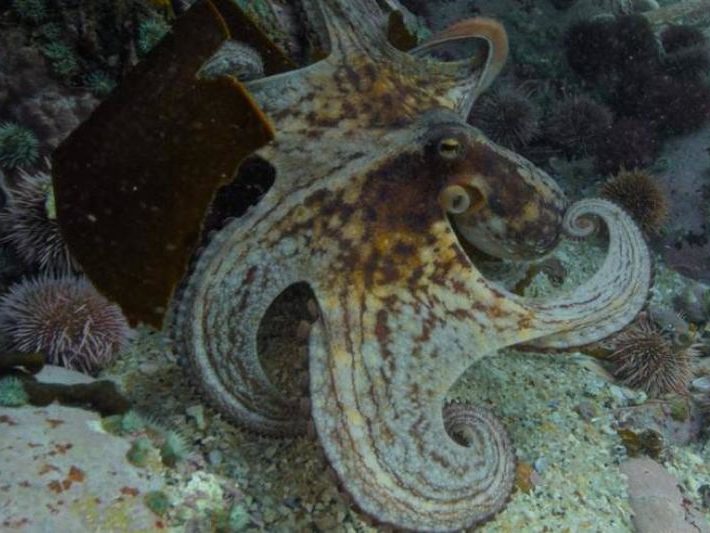
Source: Oleksandr Sushko/ Unsplash
Of course, with their habitat deep under the waves combined with their alien appearance and short lifespans, the octopus seems like something out of a dream or perhaps from another world. With such intelligence, their behavior can be very unpredictable.
Meet The Team Combing The Secrets Of The Deep
For a quarter of a century, researchers at the Monterey Bay Aquarium Research Institute have spent their lives understanding deep-sea animals. The non-profit institute, located in Moss Landing, California, performs cutting-edge marine research with the help of high-tech tools, such as robotic underwater vehicles.
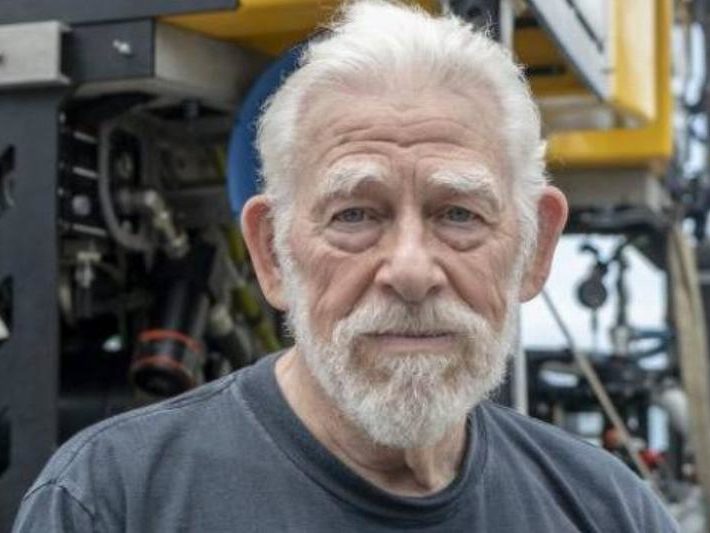
Source: Monika Naranjo Gonzalez/Schmidt Ocean Institute
The Institute is famous for taking risks and asking big questions. Their interdisciplinary team helps push the fields of marine biology, geology, chemistry, ocean science, bio-oceanography, and engineering to their limits. They are no strangers to sea life.
Diving Into Midwater-1
Over 25 years, teams of institute researchers led investigations into a part of the ocean floor that the Institute called Midwater 1—a canyon-shaped underwater landscape filled with intriguing flora and fauna. It was an exciting venture because it was previously unmapped.
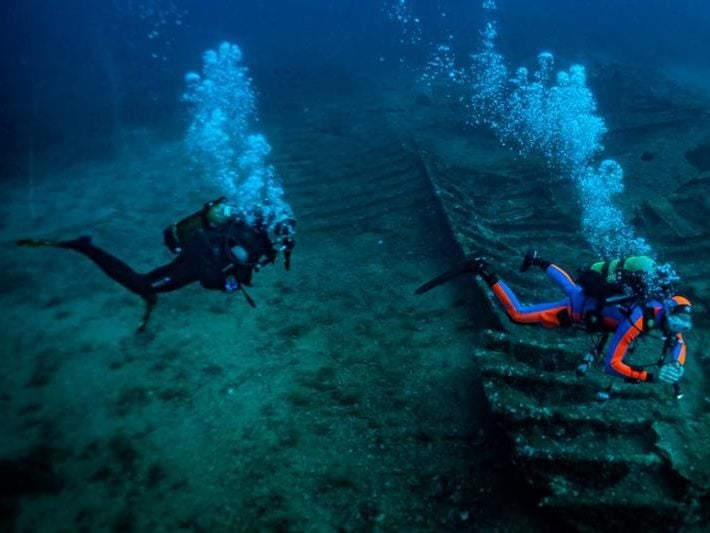
Source: Alessandro Rota/ Getty Images
Much of the ocean is unknown to humanity, making it a trove of possible discoveries. Midwater-1 is daunting, but it wasn’t long until something of interest surfaced.
Searching For The Secrets Of The Sea
In May 2007, one of the Institute’s remotely operated vehicles was sent to the depths of Midwater-1 to comb the deepest (and most difficult-to-explore) areas. The latest technology of the vehicle shed light on long-unseen mysteries deep below.
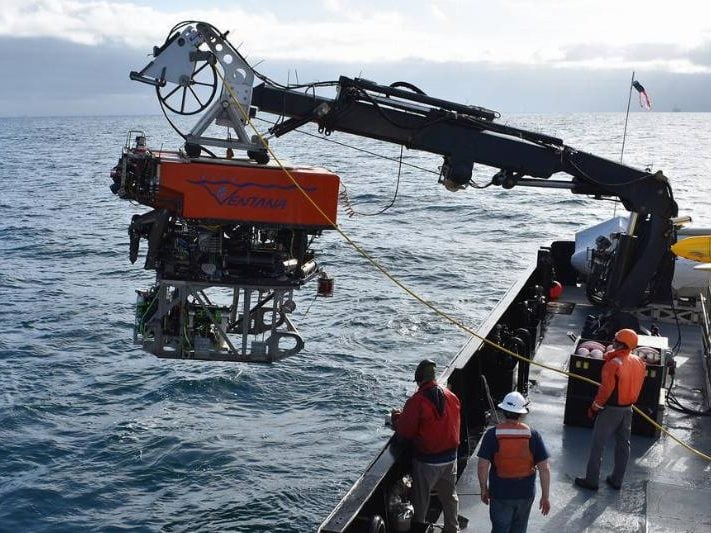
Source: Monterey Bay Aquarium Research Institute
The remote-operated vehicle had to dive very far down to touch the seabed—as far as 4,600 feet below the surface. The researchers observed the vehicle’s monitors as it roamed, waiting to see anything unusual. And come across something usual it did.
A Real Cliffhanger
Bruce Robison – the project’s team leader – caught a glimpse of something hanging over a ledge in the watery canyon from the screen. The vehicle was commanded to move closer to investigate. They saw the striking outline of what looked to be an octopus clinging to the rock.
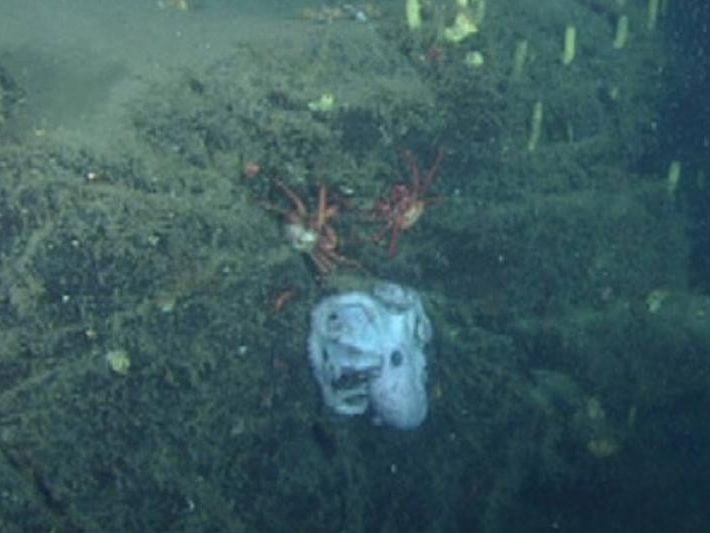
Source: Monterey Bay Aquarium Research Institute
It was sitting dead still. Bruce and the other scientists weren’t sure if it was even alive! They didn’t want to disturb it, so the remotely operated vehicle held a tight focus on the eight-legged creature.
What Was It Doing?
The team was transfixed with the creature. After a long time, the octopus stirred, slowly moving one of its tentacles away from the rock face. It was very much alive. It isn’t always easy capturing footage of an octopus, but this one seemed like it was sitting in for the long haul.

Source: Wild Horizons/Universal Images Group via Getty Images
While we might have octopi in the aquarium to ogle at, much less is known about the behavioral tendencies of the octopus in the deep waters of its natural environment.
A Creature As Old As Time
Octopuses have been around for over 300 million years and are related to squids and cuttlefish. They started as small, shelled creatures and evolved to become more agile and intelligent, with advanced nervous systems and eyes like those of vertebrates.
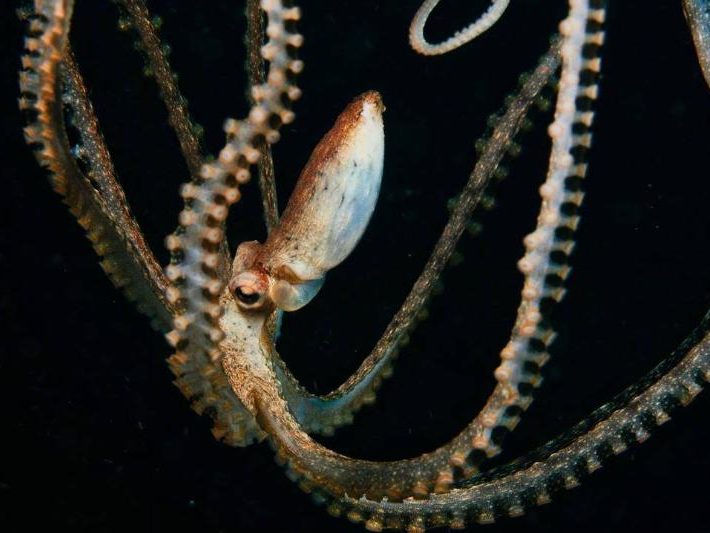
Source: Swanson Chan/ Unsplash
Their long time on the planet has given them plenty of evolutionary advantages. For example, they can change their skin color and texture to blend in with their surroundings. They can also change the shape of their bodies to mimic rocks, seaweed, or other objects.
Masters Of Underwater Defence
As well as being able to hide at will, they also have powerful deterrents. Upon seeing a foe, they can shoot jets of ink or poison. Bruce and his team had to be careful not to annoy their octopus with their vehicle, lest it strike out!
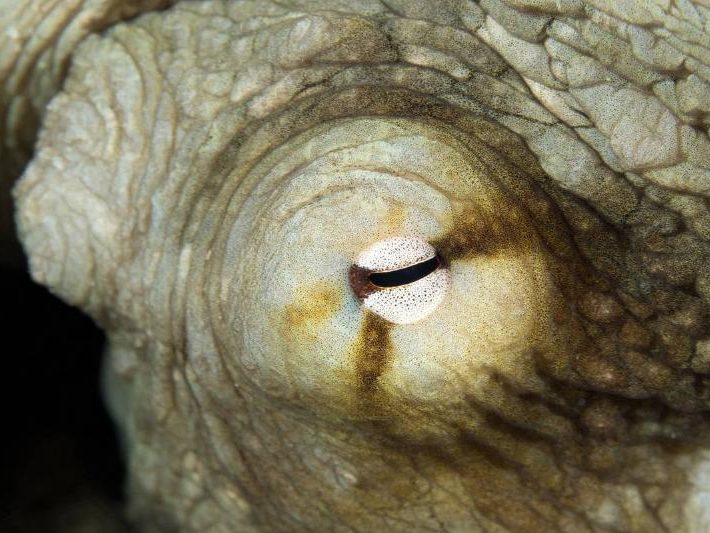
Source: Wild Horizons/Universal Images Group via Getty Images
As well as being dangerous, they’re also smart. They have nine brains—a primary brain and eight for each limb—which they dexterously use to solve problems on their journey through the ocean. Some even carry shells or empty coconuts around as hiding places.
Their Time Is Precious
Although intelligent animals, octopi do not possess long lifespans and only live around one to two years at a time. While an octopus needs little time to adjust once it hatches, its time is limited. Not only that, but once they mate, their time is up.
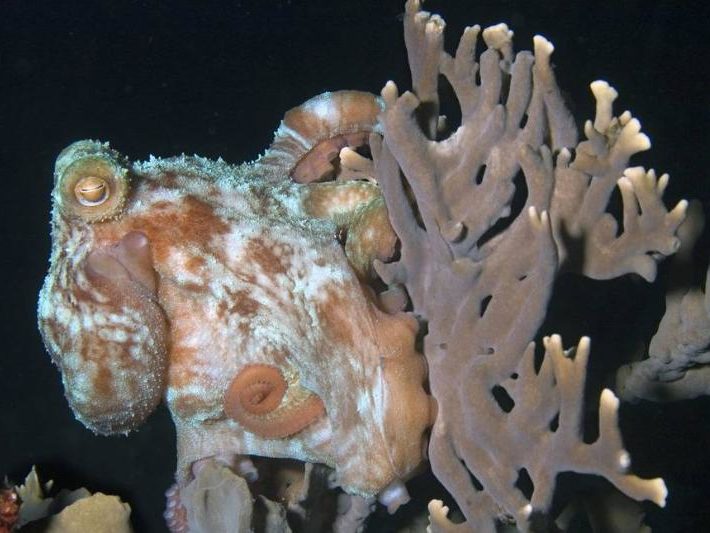
Source: Wild Horizons/Universal Images Group via Getty Images
Octopi are “semelparous,” meaning they can only breed once and pass away once they do so. No wonder these animals are so testy! It’s because they’re protecting the precious little time they have left.
As Still As A Stone
With their prickly demeanor and short lifespan in mind, it’s no wonder that the team at the Institute was puzzled by this still female clinging to the rock as it did once they returned with the remotely operated vehicle on their second trip a month later.
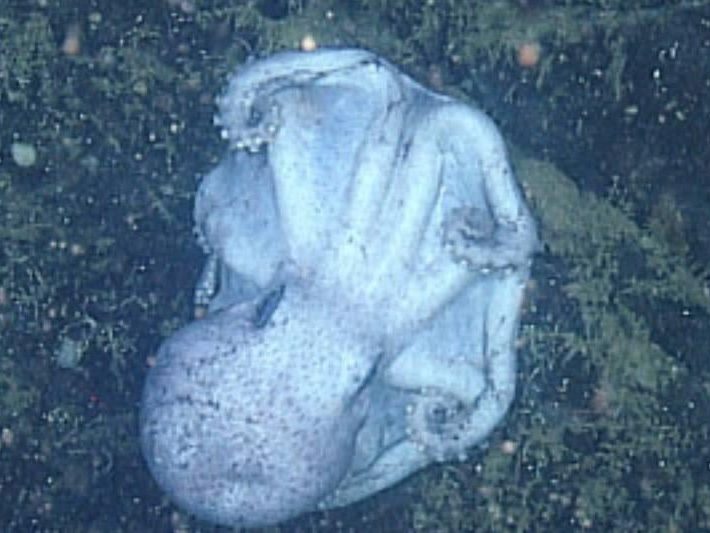
Source: Monterey Bay Aquarium Research Institute
The team clocked her as a female from the lack of “hectocotylus,” an arm exclusive to male octopi. They also noticed that she was not in camouflage mode, nor did she seem agitated by the vehicle’s return.
Was She Injured Or Sick?
The researchers were baffled. Upon repeat visits, they always found her in the same position. She was alive and appeared to be resting, but there had been no signs of movement. The researchers looked back to their previous tapes and confirmed it.
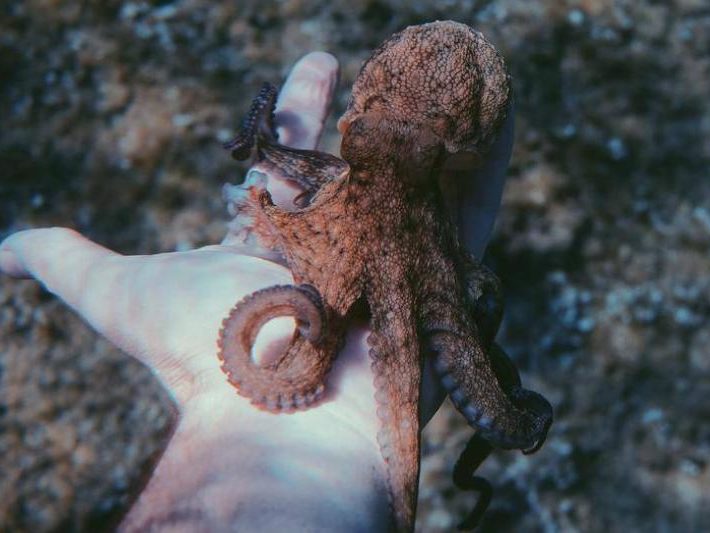
Source: Mael Balland/ Unsplash
They knew that she had recently settled there. While their new remotely operated vehicle could get eyes on deeper parts of the ocean, they had explored this part of the canyon on previous trips. They had never noticed any octopi around.
Perhaps She Was Guarding Something…
If she was sick, she took her time to heal (or succumb). The researchers also played around with another idea: she was hiding something. She splayed herself out like she was trying to cover something up. What would an octopus want to hide?
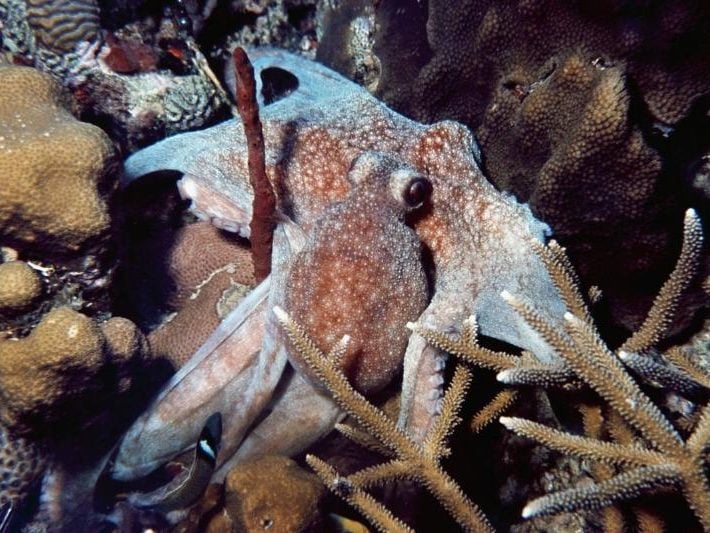
Source: DeAgostini/ Getty Images
Perhaps a trove of treasure? Neptune’s trident? The entrance to Atlantis? Probably not. In any case, if she was hiding something, she was on her A-game. The researchers could snatch as much as a peak.
Checking Back In
As intriguing as this one mysterious octopus was, the team still had a job to do. They surveyed the rest of the area, and just as they were about to bring their remotely operated vehicle to the surface, they checked back in. Of course, she was still there.

Source: Pia/ Pexels
During their next visit to the submarine canyon in Midwater-1, again and again, their craft came down, and each time they left, the researchers told themselves that it would be the last time they would see her.
Ledges Aren’t Their Favorite Environments
Most types of octopi prefer a habitat closer to the ocean floor. They hunt for food closer to the surface but make their homes in places they can sneak around and hide in, like flooded caves, crevices, and under the natural cover of darkness.
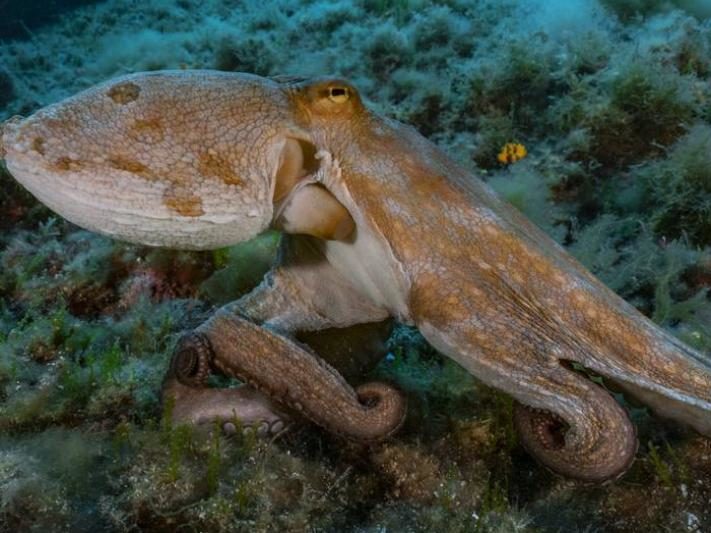
Source: Alexis Rosenfeld/ Getty Images
Only a few would think of settling on a submarine canyon—few would likely stay there for months, like this one. After such a long time hanging out on the underwater cliff, the researchers decided to probe deeper into the mystery.
Her Body Was A Nest Of Scars
It had been over a month. After noticing she had become thinner, the scientists brought a gift down with the remote vehicle to see if she would move from hunger. They presented her with crab meat, but she didn’t seem interested. The next time they saw her, they met her in person.

Source: Getty Images/ Unsplash
The Institute sent divers down just for her. They got as close as they could to her body. They saw scars all over her: it was clear that she’d been in fights.
Was It A Long-Term Injury?
The divers from the Institute inspected her limbs and head. They were looking for signs of motor damage or potentially a movement-impairing wound that kept her fastened to the ledge, slowly starving. But they couldn’t find anything out of the ordinary.
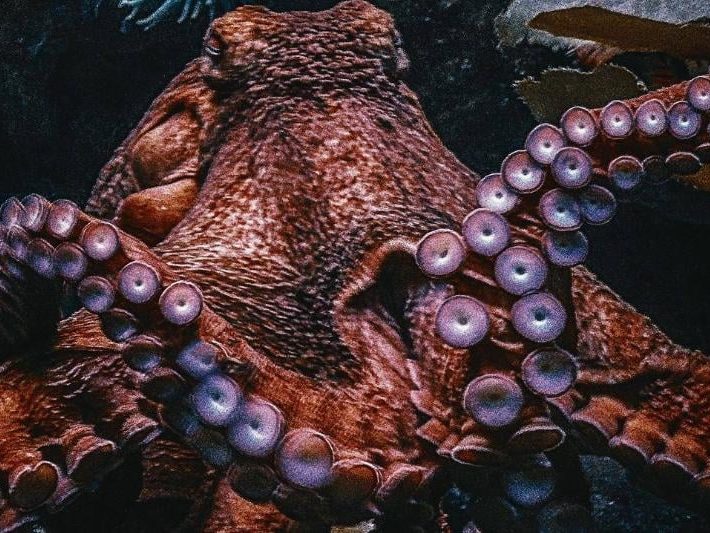
Source: K Mitch Hodge/ Unsplash
While her weight loss became more apparent up close, it appeared she had changed her weight another way. While looking over older footage, it seemed that some lump had grown under her. Had she slowly been adding to her treasure?
Months Passed—She Was Still There
The researchers at the Institute played this game with her for months. Each time they went down into Midwater-1, they checked for signs of movement but found no evidence. How was this octopus even still alive?
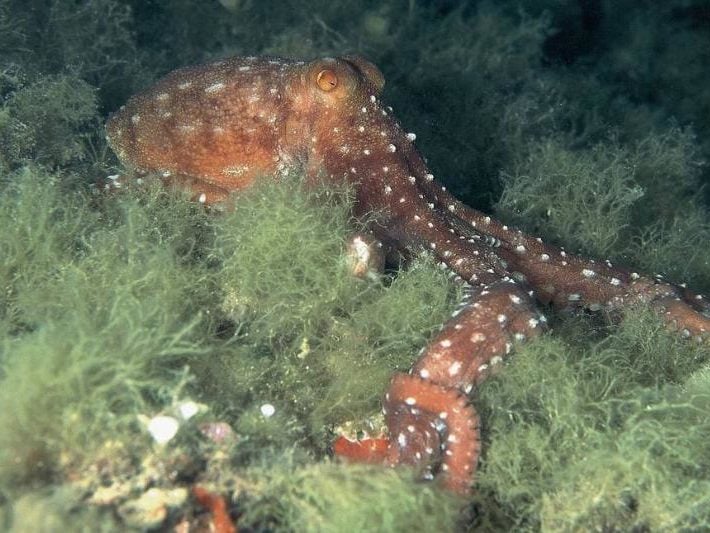
Source: DEA / S.MONTANARI/De Agostini via Getty Images
This behavior wasn’t just puzzling—it was impossible. Most octopi in captivity or shallower waters live for fewer than two years. Yet, this octopus seemed happy to spend its short life resting in one spot. The researchers were convinced she was about to pass away.
Was Midwater-1 A Feeding Ground?
Midwater-1 produced types of animals—octopi in particular—that humans hadn’t seen before. But was there something about the area that had attracted this octopus? Perhaps a reliable source of food? Could it be that the octopus would suddenly feast on a hearty meal, then return to rest?
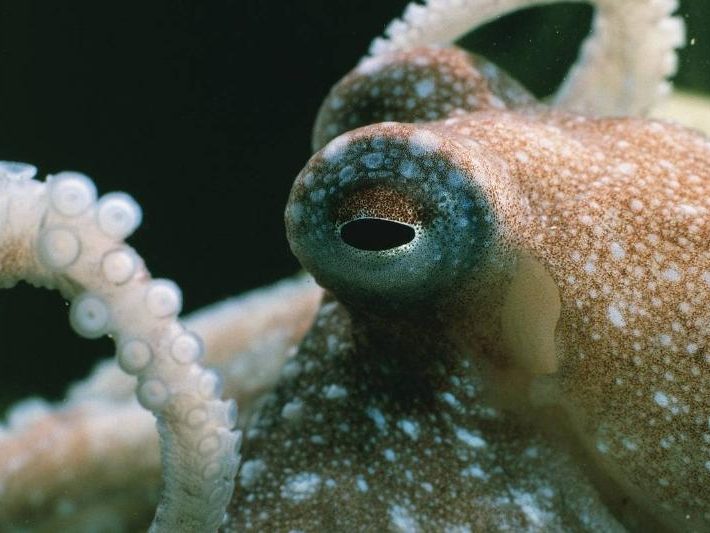
Source: DeAgostini/ Getty Images
If that were the case, the octopus didn’t look very well-fed. She seemed practically baggy and paler. Even her eyes had grayed throughout their regular visits. She looked thin.
They Aren’t Conservative Eaters
The researchers at the Institute were quick to point out that octopi are not known for their meager appetites. An octopus will eat about anything it can catch, including lobsters, small fish, crabs, clams, mussels, and snails—you name it.
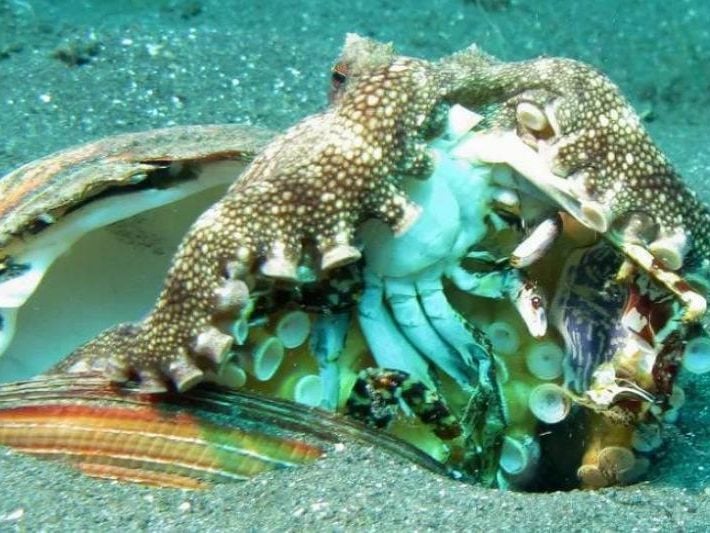
Source: Silkebaron(prilfish)/ Flickr
They’ve even been known to eat other octopi. Seeing an octopus eat strikes familiar chords in any hearty eater—or, at least, a person who uses their hands to eat. So, it was unusual to see an octopus looking this malnourished.
The Mystery Grows
As well as something expanding beneath her, the divers noticed the softer parts of the cliff had changed. She had dug herself in but was sitting on (or against) something large. At this point, the researchers were sure they knew what she was doing.
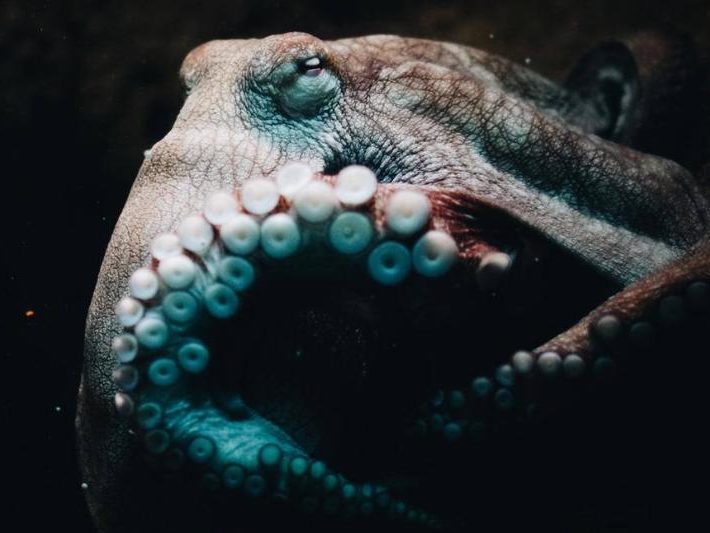
Source: Qijin Xu/ Unsplash
Even still, it defied everything they knew about octopi. She continued to wear away, no matter how many bits of food the researchers brought down. It was as if she was dreaming with one eye open.
The Secret Is Revealed!
The team realized that she had been guarding the most valuable treasure an octopus could have—all 150+ of them. Her behavior was strange to those humans who had only ever known about a fraction of the sea’s mysteries. The answer was simple but incredible all the same.
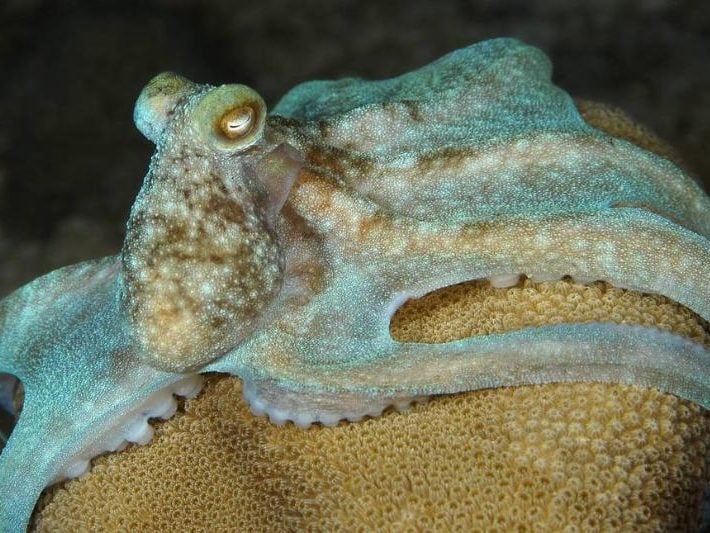
Source: Wild Horizons/Universal Images Group via Getty Images
Of course, she had been protecting her precious eggs. While most octopi brood with their eggs for around 50 days, she had been sitting on them for over four months. The researchers were amazed to see an octopus brood for so long. They hadn’t seen anything yet.
…Then, Four Years Pass
If the researchers “couldn’t wait” for those eggs to hatch, they would be on tenterhooks for quite some time. For 53 months, this female octopus sat on her eggs, protecting them, while she slowly withered away. The eggs grew larger under her care. And — there were lots of them.
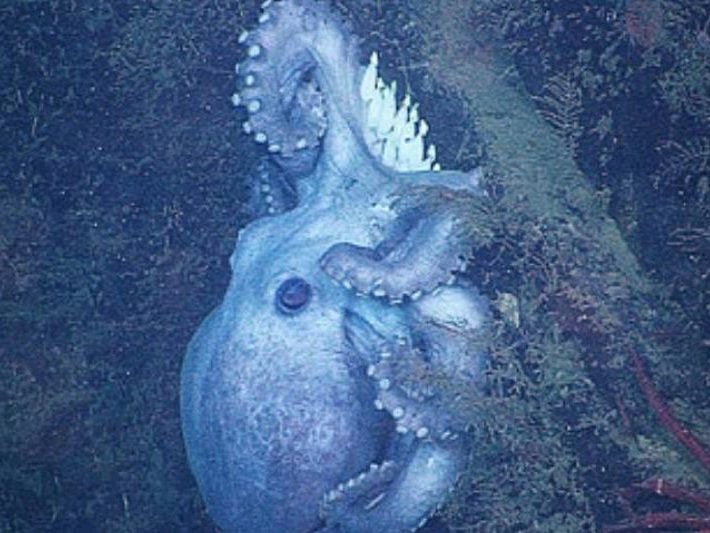
Source: Monterey Bay Aquarium Research Institute
Soon, they started to appear out from under her little nest, giving the researchers something to look at. Although they couldn’t see how many she had, there were hundreds of them. The scientists could only guess how she had survived.
A Four-Year Mission
Bruce and the other researchers guessed that she had been able to watch over her eggs for so long because she hadn’t moved, lowering her metabolism and need for food. Whatever the case, it seemed to have worked.
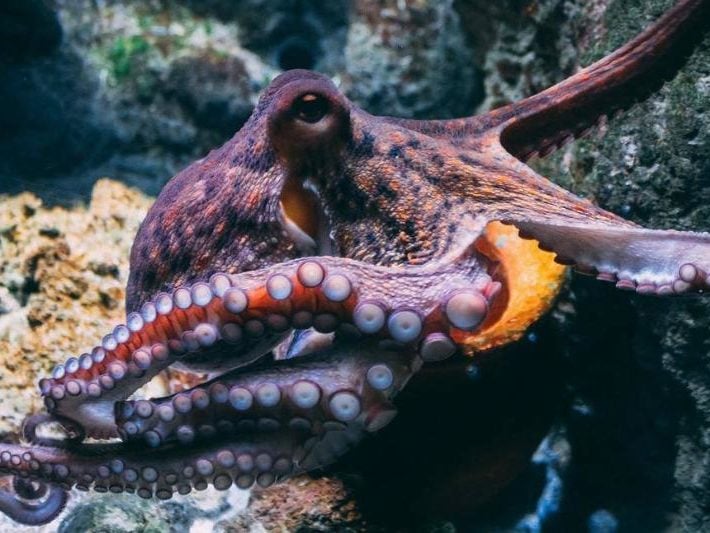
Source: Diane Picchiottino/ Unsplash
They could make out baby octopi growing in transparent shells, the eggs bursting from under her. Her limbs were curled around them, keeping the eggs within reach and away from predators. She had her mission, and she was determined to see it through.
A Lot Of Love For A Lot Of Heart
Within this headstrong, unwavering octopus pumped the heart of a dedicated mother—or three hearts. Because they live in such cold places with such low oxygen levels, octopi need all three of their hearts pumping blood cells around their elongated limbs and body.
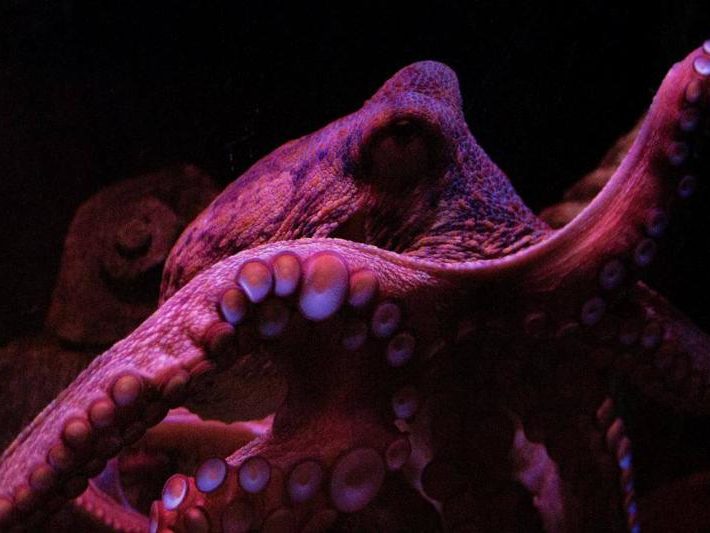
Source: Matteo Vella/ Unsplash
Another strange fact about octopi, including our Graneledone boreopacifica, is that they have blue blood instead of red. This is because, instead of hemoglobin, the protein we have in our blood that contains iron, octopi have hemocyanin, which contains copper.
All Her Minds Were On Protecting Them
Her three hearts were all in the right place. Since all octopi have a central brain and then a brain for the working of each tentacle, it appeared that she had her minds made up—she would protect her babies for the rest of her life.

Source: Kostas Morfiris/ Unsplash
This long-lasting brooding taught the researchers that octopi might live much longer than we previously expected. Since humans have barely been able to penetrate the mysteries of the sea, it’s possible that there could be some species that live even longer.
An Extraordinary Act
Bruce and the researchers were floored by her brooding time, which he described as going “on and on.” The eggs finally hatched in September 2011. One reason for the eggs’ slow development—and their mother’s long deterioration and stamina—was the cold temperature down at that depth.
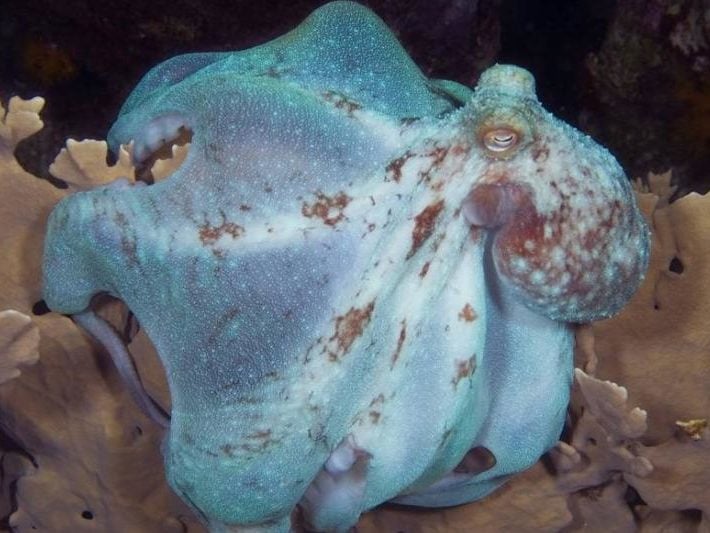
Source: Wild Horizons/Universal Images Group via Getty Images
The cold meant that her metabolic processes were slowed down—in other words, she was burning fewer calories in the colder waters. All the same, it was an extraordinary act of willpower and love.
Setting Records
“We tend to think of parental care only in higher life forms,” Bruce said concerning her extreme level of dedication, “but here’s a parent who is going all out to ensure the survival of her offspring.” If starving yourself for four years and six months doesn’t prove that, nothing does.
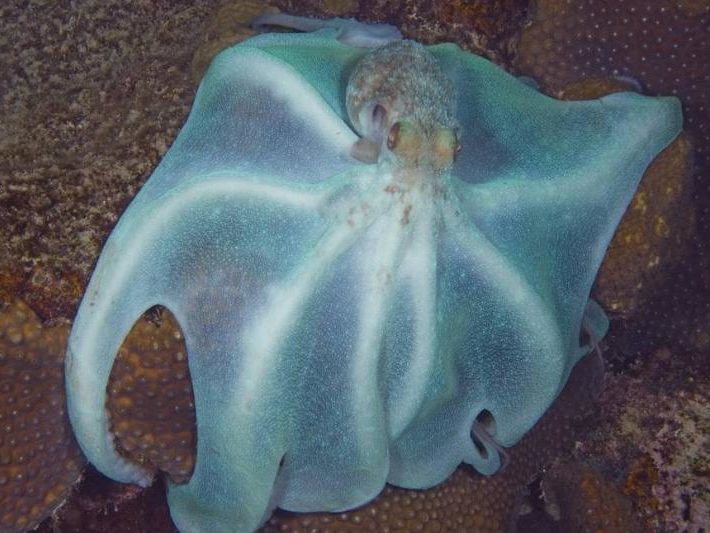
Source: Wild Horizons/Universal Images Group via Getty Images
Human women have it tough with nine months of pregnancy and years of feeding, but this might be the closest comparable case in the animal kingdom. It’s undoubtedly the longest recorded for an aquatic animal.
The End Of Her Watch
Once her watch over her eggs was done, she finally left the ledge and passed on into the dark. The Graneledone boreopacifica eggs, which were sealed in fresh, oxygen-rich water by their mother, swam into their watery world, fully formed and ready to hunt. They were large for octopi.
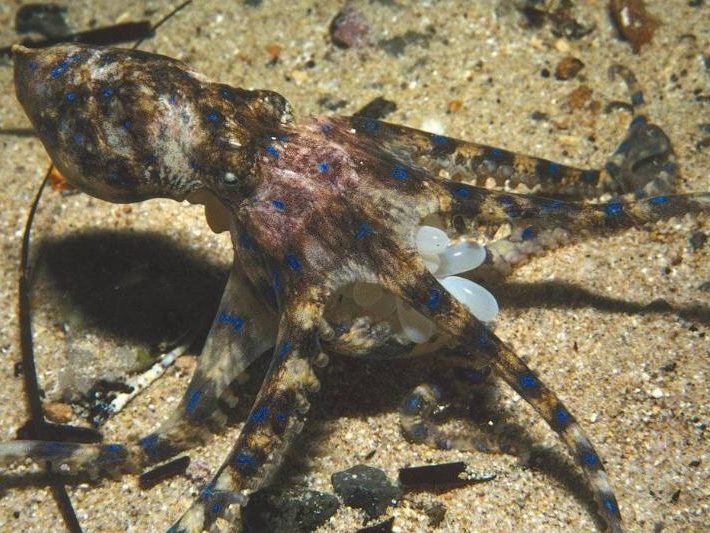
Source: Auscape/Universal Images Group via Getty Images
The researchers arrived just after the newly-hatched octopi had swum away. They were able to count roughly 160 empty eggs in total. They couldn’t find the mother, who likely began to fade away soon after her children were born.
The Last The Researchers Saw
The mother octopus didn’t look in good shape the last time Bruce or any of the researchers at the Institute saw her, but she did successfully fulfill what seemed to be her life’s task. Her legacy goes swimming in a hundred and sixty little (or big) ways.
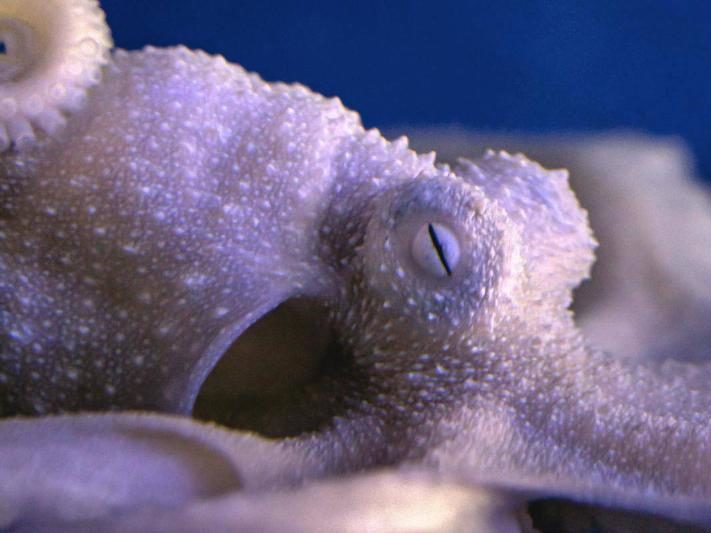
Source: Dustin Humes/ Unsplash
This fascinating encounter is just a glimpse into the strange world of octopi and the ocean depths. Perhaps in the future, we’ll discover that even the alien-looking octopus can share traits with us two-legged land walkers: dedication to family.
